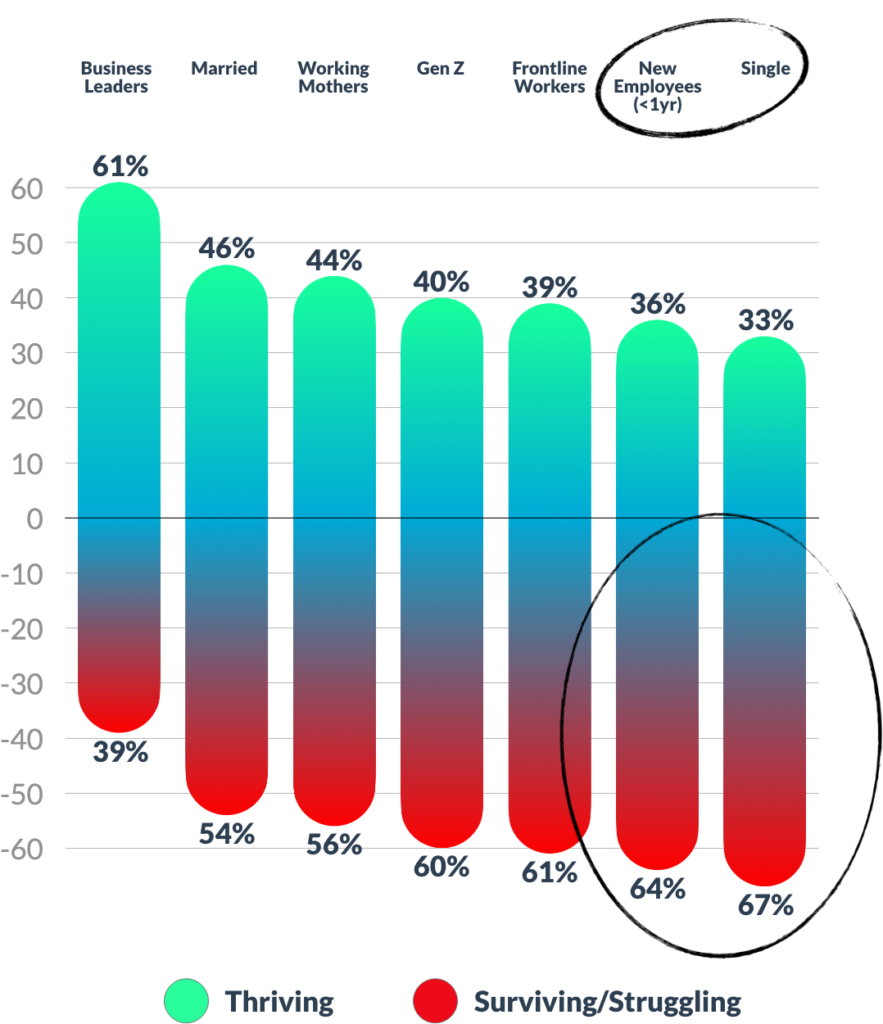Hybrid work is the new model for business success. A blended workplace model where some employees return to the workplace certain days of the week and others continue to work from home. This pod structure is quickly becoming common in many office-based workplace settings.
Employment Success:
Hybrid & Remote Work
Flexible work is a new standard operating paradigm. Remote work, due to the pandemic, has created new job opportunities for some, provided others with more family time, and allowed options for whether or when to commute. Even the talent landscape has fundamentally shifted from urban centers of power to decentralized regional hubs within similar time zones. However, there are several challenges ahead. Teams have become more siloed, video meetings are cumbersome, digital exhaustion is a real, and organization of talent is challenging.
Challenges of Remote Work
In a recent 2021 Work Trend Index, a study which combines a survey among 30,000 people from 31 countries with productivity and labor analysis several trends begin to emerge.
- Flexible Work is Here to Stay
70% of workers want flexible remote work options, yet 65% crave more in-person co-worker time - Leaders are Out of Touch with Employees
61% of leaders say they are thriving, 23 points higher than those without decision-making authority. - High Productivity is Masking an Exhausted Workforce
20% say their employer doesn’t care about their work-life balance. 45% feel overworked and 39% feel exhausted. - Gen Z is at Risk and will Need to be Re-energized
60% say they are merely surviving or flat-out struggling right now. - Shrinking Networks are Endangering Innovation
Teams are more siloed in a digital work world. - Authenticity will Spur Productivity and Wellbeing
17% have cried with a colleague this year and 39% say they’re more likely to be their full, authentic selves at work - Talent is Everywhere in a Hybrid Work World
46% of remote workers are planning to move to a new location this year. 41% are considering leaving their current employer this year.
The research highlights how single employees (and new employees) are disproportionately impacted compared to leaders, married employees, and working mothers. (Working fathers weren’t measured in the study). Suggesting that burnout and emotional toll is most worrisome for those at the bottom because they don’t have immediate family to help them in life.
RELATED: Grow your Business Post-Pandemic
Who Struggles / Thrives from Remote Work
Single employees bear the brunt of remote work challenges.

The Work Trend Index survey was conducted by an independent research firm, Edelman Data x Intelligence, among 31,092 full-time employed or self-employed workers across 31 markets between January 12, 2021 to January 25, 2021.
Microsoft analyzed an aggregated 122 billion email interactions and 2.3 billion meeting interactions in Microsoft Teams and Outlook across industries and countries around the world.
More Remote Talent
One of the benefits of the new remote work paradigm is that it widens the talent marketplace. Remote job postings on LinkedIn increased more than five times during the pandemic, and people are taking notice. Forty-six percent of remote workers surveyed plan to move to a new location this year because they can now work remotely.
While many challenges still remain, it’s clear that hybrid / remote work is here to stay. Many operational challenges still need to be adjusted for some workers. As we analyze these results we pause to think of employment structure that helps workers thrive outside dense urban centers of power.
It’s an exciting time to build distributed teams.
Embrace the shift to remote work.
Get brands inside entertainment scenes.
Follow Us:
Related posts


Learn More ›
Latest Articles
Subscribe to Newsletter
- DTC marketing news and trends—tracking the industry ups and downs Source: Ad Age-Latest Published on 2023-09-25
- Hollywood Screenwriters reach tentative deal to end strike Source: Ad Age-Latest Published on 2023-09-25
- Hollywood Screenwriters reach tentative deal to end five-month strike Source: Ad Age-Latest Published on 2023-09-25
- What Gen Z loves—and hates—about brand marketing Source: Ad Age-Latest Published on 2023-09-25



Stay connected